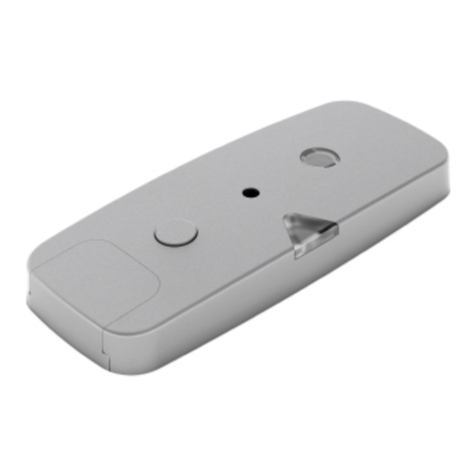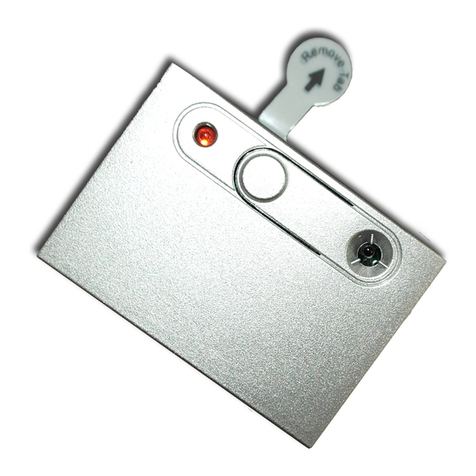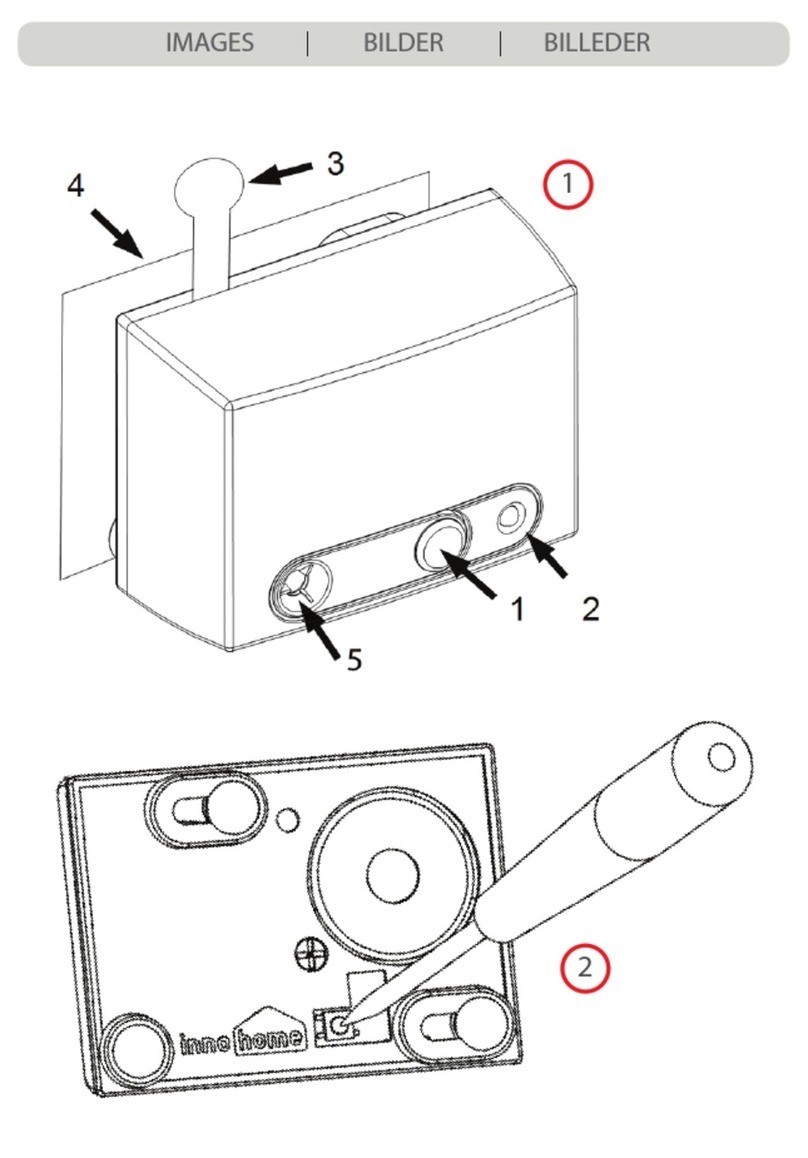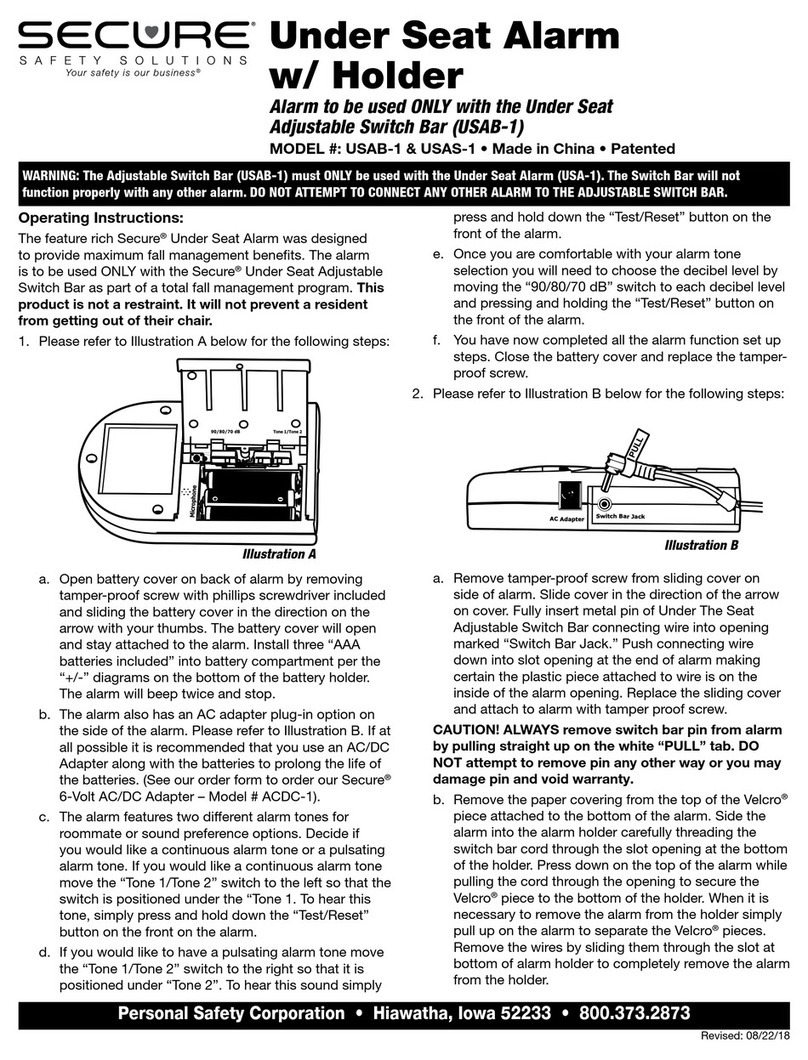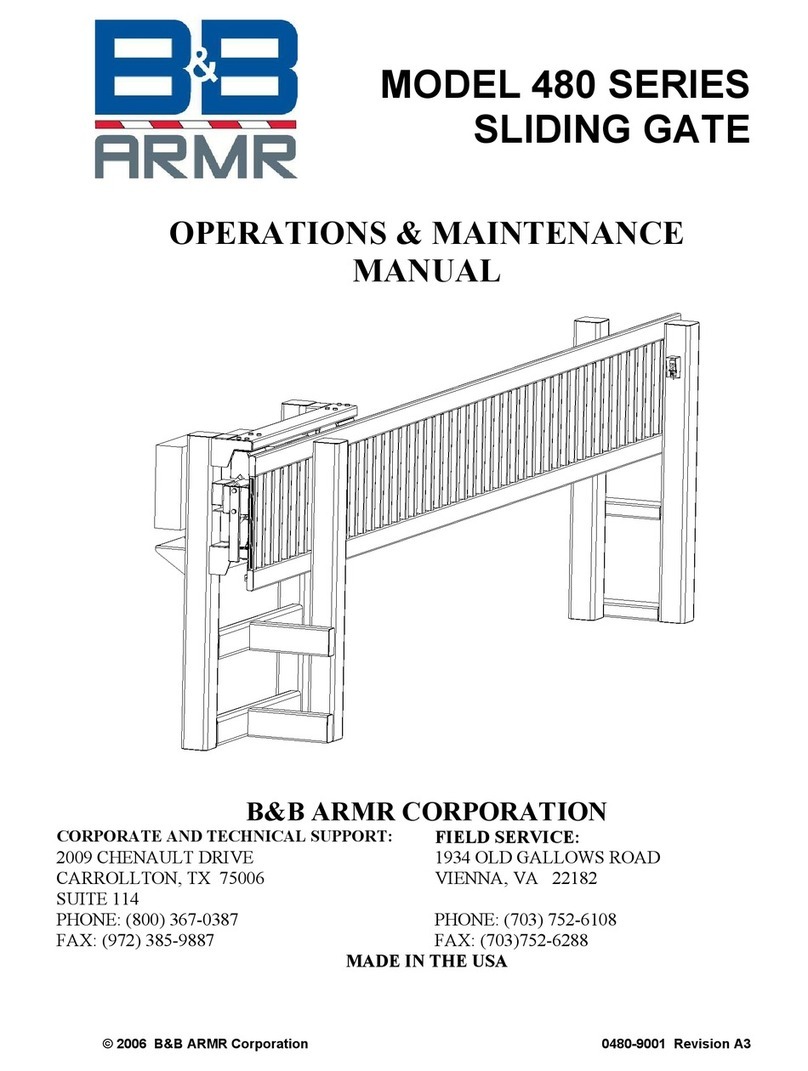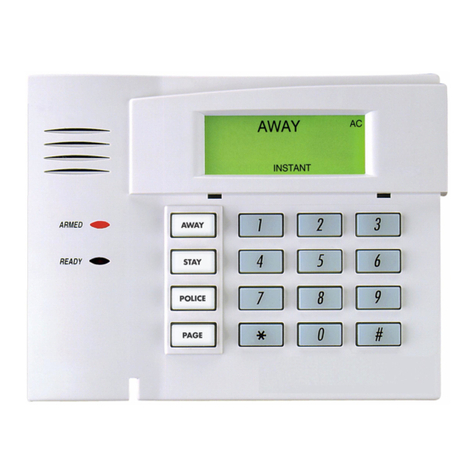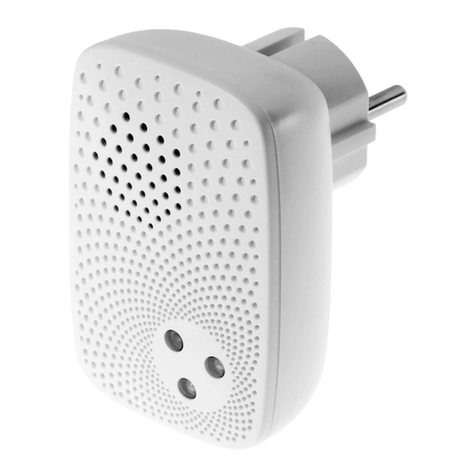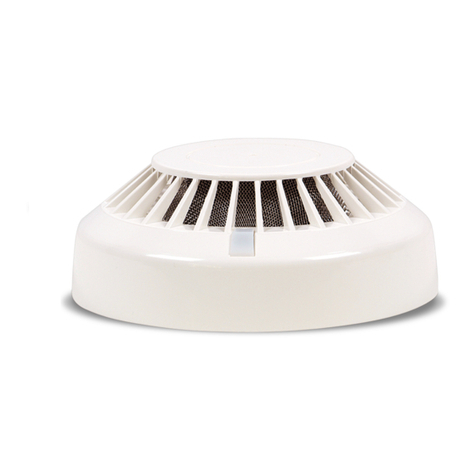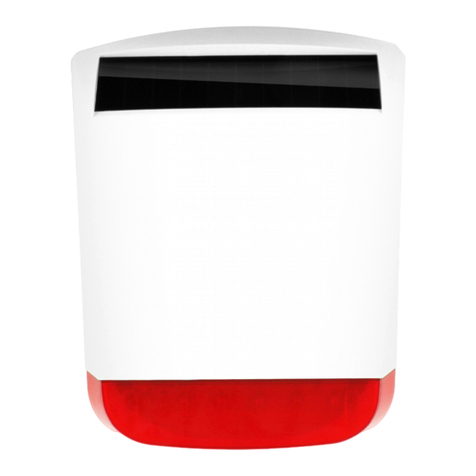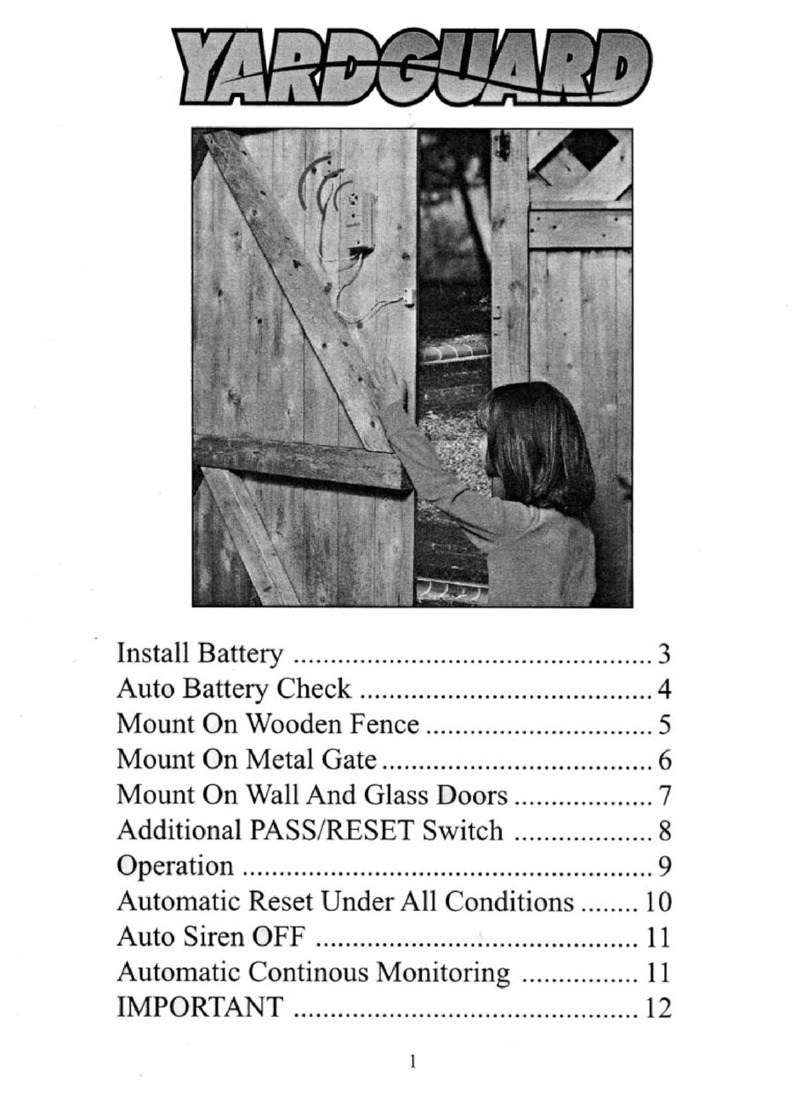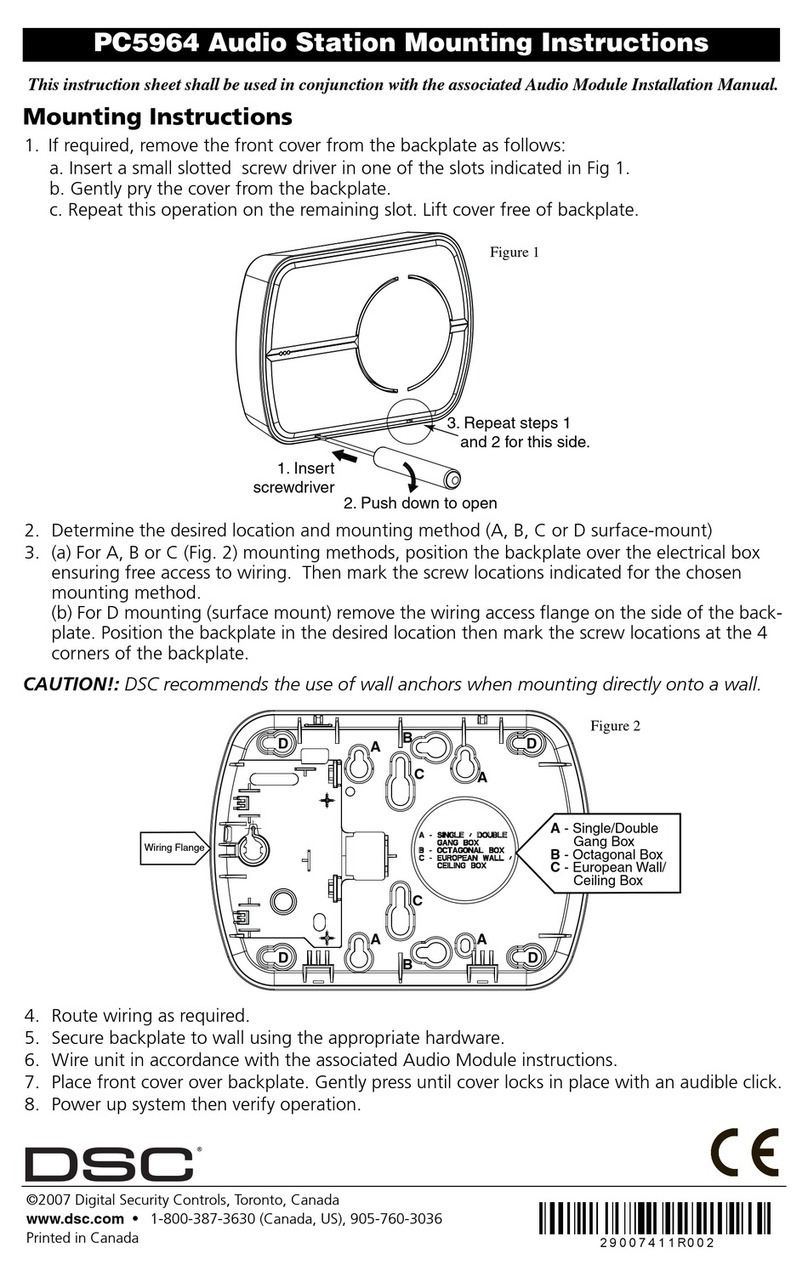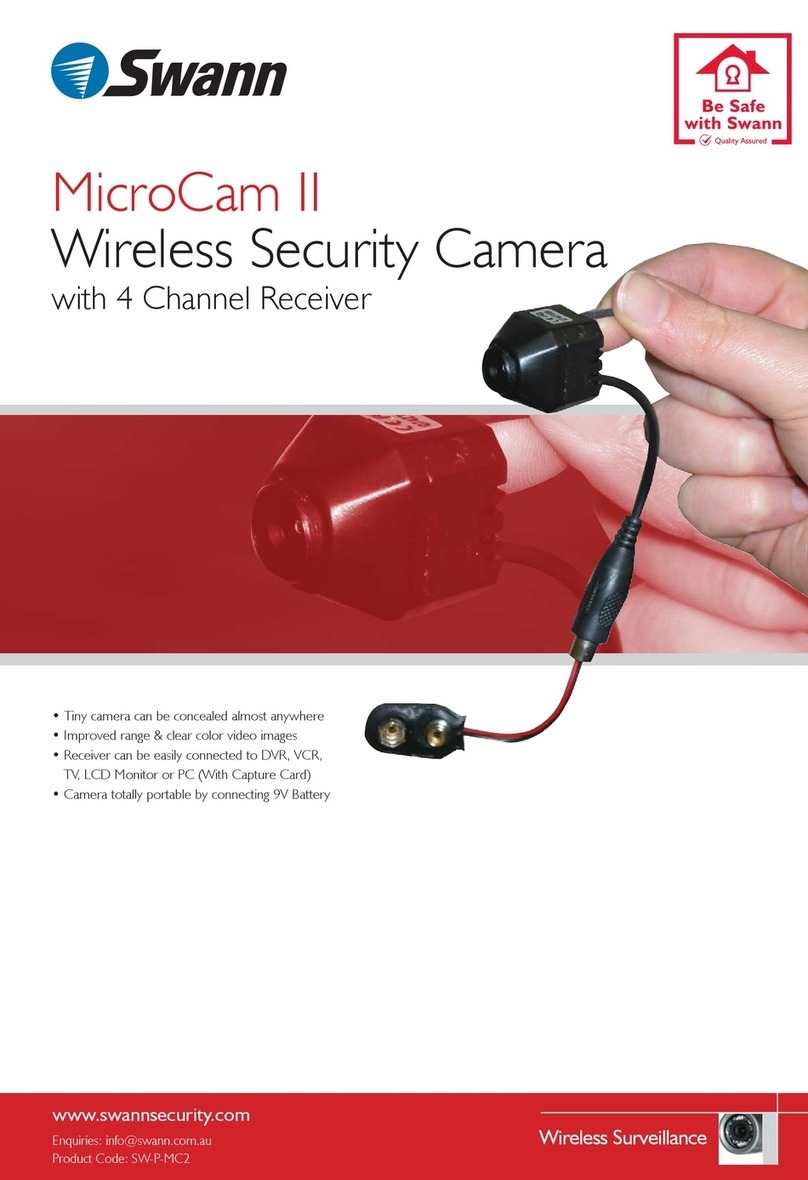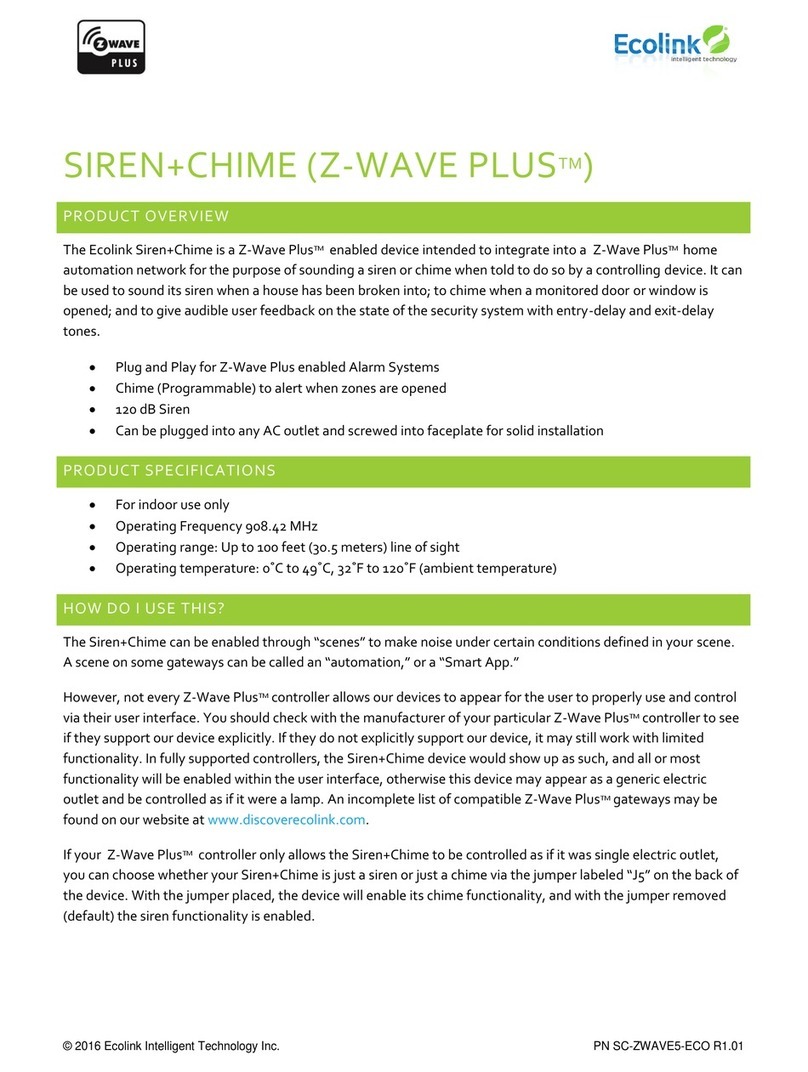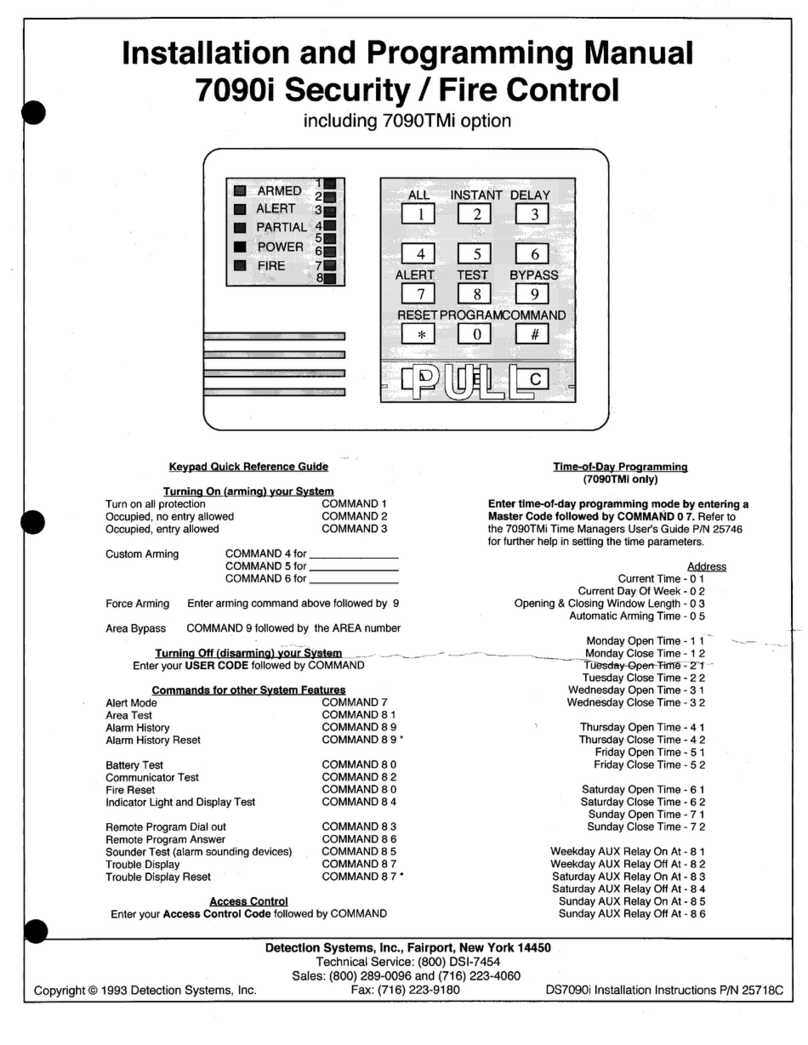5
Cooker type Available features Activation
All cookers Carbon monoxide / smoke alarm
detection (requires additional alarm).
Alarms detected using sound detection.
Compatible with virtually all carbon monoxide /
smoke alarms.
Silent alarm
The Intelligent Heat Sensor does not signal
an audible alarm but ashes the red LED upon
alarm.
Activate sound
detection and test
connection, see
page 8.
See page 22.
Cookers with
mechanical knobs
that have a clock
- also mechanical
cookers that do not
have a clock when the
user often cooks food
by leaving a pot on
low heat for long long
periods of time.
Intelligent Timer detects if the cooker
has been abandoned, by real-time cooker
operation analysis. The cooker is turned o in 1 – 3
hours, depending on the power setting and the
type of cooker. The cooker is not turned o when
used on a low power setting.
Sensor dirt and grease detection
Identies when the Intelligent Heat Sensor’s
operation is compromised by being covered by
dirt or fat.
Activate mode 2, see
page 10.
Cookers with
mechanical knobs
that do not have a
clock
+Intelligent Timer+, detects if the cooker
has been abandoned. Includes low-power
setting detection. Works as the Intelligent Timer
described in the row above. Also detects hotplates
on a low power setting, which can cause burns
but are unable to produce a re.
+Sensor dirt and grease detection+
increased frequency of diagnostic checks
Recommended for high-risk user groups.
Safety Lock switches o the power to the
cooker when it’s not in use.
The cooker needs to be manually activated before
use (by pressing the Heat Sensor cover once), and
is ‘locked’ approx. 20 minutes after last use.
No Safety Lock ->
activate mode 3A,
see page 10.
With Safety Lock ->
activate mode 3B,
see page 11.
2.1. Optional features description
The Stove Guard can be adjusted to suit the needs of dierent user groups.
Additionally, more basic cookers without a thermostat or a timer can be upgraded to
correspond to cookers with those features (modes 2, 3A and 3B).
2. Choosing optional features

